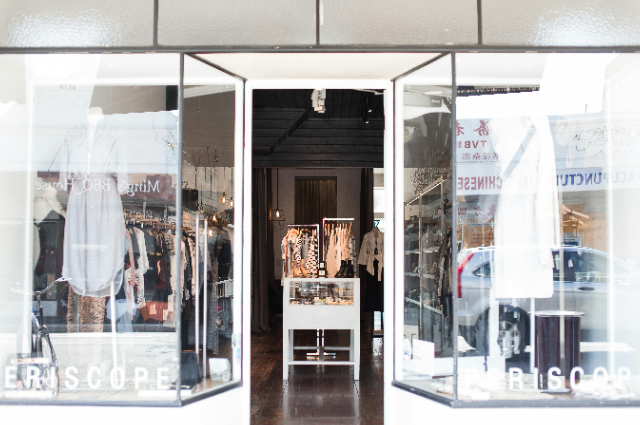
Dupe Culture
Dupe culture or knockoff is are colloquial term for products similar in appearance, functionality, or design to a higher-end branded item but sold at a much lower price. Unlike counterfeit products, dupes do not copy trademarked brand names or logos and are often sold at mainstream retailers. The terms dupe and knockoff are often used as pejoratives to infer inferior quality, and are often used synonymously with ripoff, imitation, and a clone. Dupe culture has mainly influenced Gen Z and millennials, and has emerged significant trend in the shopping world.
The concept of knockoff clothing dates back to the early 1990s, when designers would copy clothing from Paris fashion houses. Paris or worn by Hollywood performers. Around 1913, French designer Paul Poiret discovered that inexpensive replicas of his designs were being sold in the United States. French fashion houses like Chanel and Dior would license their designs and provide materials to American department stores to manufacture knockoffs, which would be sold alongside their higher-priced authentic counterparts.
Steve Madden Admitted to Duping High-End Designs
Steve Madden usually had an almost identical version for half the price down the hall. Now, Steve Madden is making headlines for the same reason: his cheaper dupes of designer shoes. In an episode of The Cutting Room Floor podcast, the host Recho Omindi quizzed Madden on his designs, asking if he could name the original designs, but also that he didn’t shy away from the fact that Steve Madden takes inspiration from higher-priced designers.
When asked how he would respond to people who call Steve Madden a knockoff brand, he said it’s like calling the Beatles a knockoff band because they would take a little bit from Motown and a little bit from Elvis. “We design shoes that I’ve nicked here and there.”
This authenticity, combined with his referring to Steve Madden shoppers as his girls and pointing out the absurdity of other brands selling plastic jelly shoes for £700, launched a complete Steve Madden obsession on TikTok. A wave of pro–Steve Madden videos flooded FYP, with people praising him for offering an attainable way to participate in designer trends and encouraging everyone to run to the Steve Madden website to support the company.
The Reason and the Rise of Dupe Culture
With rising prices, it can be tough to look cute on a budget. The rise of fast fashion and dupes — cheap imitations of more expensive goods — has captivated the younger generation. In the past, wearing an imitation of a brand was looked down on. The new generation of consumers embraces the more affordable, albeit unethical, clothing that fast fashion provides.
The harsh reality is that knockoff brands provide accessible fashion that many can afford. Fast fashion brands often draw inspiration from more expensive designer collections and boutiques. While dupes offer more accessibility to style, they come with significant ethical limitations.
Social Media: A Factor Involving Dupe Culture
As social media becomes the main source of communication and influence for the younger generation, many young consumers look to find affordable alternatives to the outfits worn by their favorite influencers. Dupes present an attractive alternative to the expensive clothing that many cannot afford.
Social media can be a force for change. Instead of promoting fast fashion, influencers should be incentivized to practice more ethical sourcing of their clothing. On the legal side, there is little protection against design fraud in the fashion industry. The fast-paced nature of fashion makes it difficult to secure patents. However, copyright and trademark laws can provide some defense for vulnerable designers.
The rise of social media platforms like TikTok and Instagram has reshaped consumer culture. Younger generations, scrolling through perfectly curated feeds, are inundated with images of luxury handbags, designer outfits, and aspirational lifestyles flaunted by influencers and celebrities.
This creates an endless cycle of desire. For those who can’t afford the latest luxury bag or loafers, dupe culture emerges as an alluring alternative.
A New Market Dynamic Between Dupe Brands, Luxury, and Consumers
Dupe brands could pose an additional challenge to luxury labels if they evolve beyond merely providing cheaper alternatives. Should they craft fresh narratives around their replicated products, they might transcend imitation to deliver genuine innovation and create something truly valuable.
As the dupe industry continues to grow rapidly, reshaping the interplay between fashion, beauty, and consumers, a new balance may emerge — forged through reinvention and overcoming the stigma of imitation.
The Environmental Fallout
Counterfeit goods don’t just threaten people. They’re bad for the planet as well. A 2022 report by the OECD and EUIPO detailed how fake goods like counterfeit pesticides, industrial chemicals, and electronics often contain hazardous substances that aren’t properly regulated. These toxic materials pose serious risks to ecosystems, contaminate soil and water, and endanger human health in surrounding areas.
Separately, a WIPO magazine article highlighted the environmental challenges of disposing of counterfeit goods, especially when they contain flammable or chemical components. In many cases, incineration or landfill is the only safe method, resulting in greenhouse gas emissions, toxic residue, and long-term waste management issues for authorities.
The rise of dupe culture provides valuable lessons for consumers and designers. The fashion industry must balance the desire for affordable and trendy fashion with ethical standards and the protection of creativity.
References
